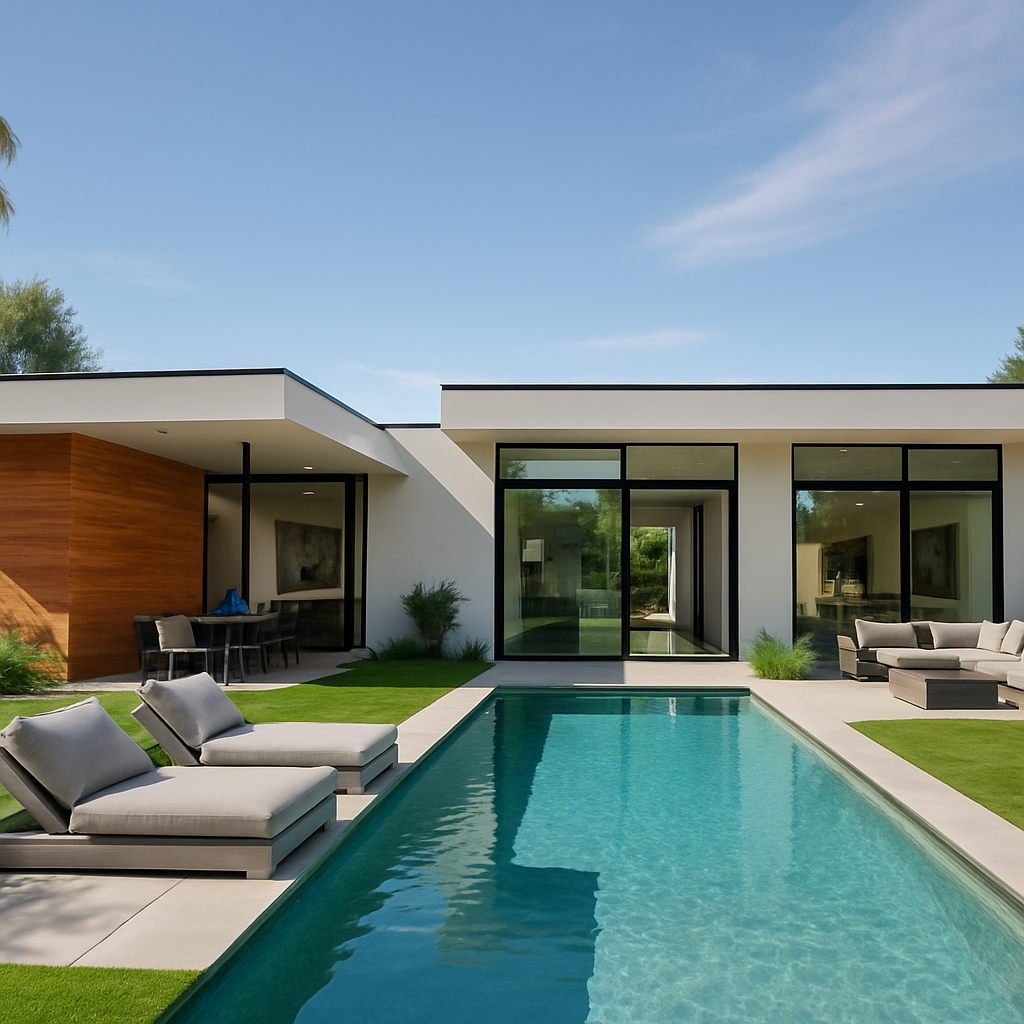What Defines Modern Luxury in Home Design?
The meaning of luxury in home design is continually evolving as homeowners shift their priorities and ambitions. No longer is luxury synonymous solely with grand square footage or ornate décor. Today, buyers see luxury as an umbrella concept—embracing sustainable living, convenience, innovative technology, and curated aesthetics. The most sought-after luxurious homes now champion open-concept floor plans that create fluidity between living spaces, seamlessly integrate smart technology, and prioritize eco-friendly features.
As tastes shift, so too does the guidance from reliable real estate experts. Vero Beach real estate agent Ben Bryk confirms that discerning buyers increasingly seek homes that balance timeless design with forward-looking amenities, aligning their environments to lifestyles of comfort, environmental consciousness, and digital efficiency.
Luxury is about personalization and creating spaces that reflect individual values, like a gourmet kitchen overlooking a lush backyard, contemplative wellness rooms, or a home fully powered by renewable energy sources. Features that once seemed futuristic—such as voice-activated lighting, advanced security, and energy self-sufficiency—have become the new norm for affluent buyers who prize lifestyle enhancements with purpose.
Popular Architectural Styles Influencing Luxury Homes Today
Modern luxury homes are at the crossroads of classic elegance and innovative design. Current architectural trends reveal a fascination with blending historical elements—think Mediterranean arches or Colonial shutters—with sleek, contemporary touches like minimalist lines and industrial materials. This fusion delivers a unique sense of charm and sophistication while accommodating evolving lifestyle needs.
Global influences also play a significant role in shaping luxury housing. International styles, from Scandinavian minimalism’s clean aesthetics to Japanese-inspired biophilic spaces, are increasingly popular as buyers seek homes that offer comfort and cultural flair. The demand for designs that reflect personal flavor and global sensibility ensures luxury properties remain refreshingly dynamic and individually tailored.
 Smart Home Technology: The New Essential
Smart Home Technology: The New Essential
No longer an option but a necessity, integrated smart technology is a defining feature in today’s luxury residences. Buyers expect advanced home security systems, automated lighting and climate controls, and energy monitoring systems that can be managed remotely. Artificial intelligence and voice assistants such as Amazon Alexa and Google Assistant have enabled homeowners to effortlessly control environments, enhance security, and optimize energy usage—all at the sound of a command.
These technologies are tailored to provide convenience, comfort, and security that was once unimaginable, allowing busy homeowners to enjoy peace of mind and efficiency wherever they are, whether at home or away.
The Eco-Conscious Buyer: Sustainability in Luxury Design
Affluent buyers emphasize eco-conscious living, propelling sustainability to the forefront of luxury home design. Eco-friendly homes now utilize renewable materials, solar panels, geothermal heating, and advanced insulation for energy efficiency. Net-zero energy homes—those that generate as much energy as they consume—are particularly coveted, as are homes holding LEED (Leadership in Energy and Environmental Design) certification, representing a gold standard for sustainable living. According to Forbes, these trends continue to attract buyers who want their homes to be as gentle on the planet as they are grand in presentation.
Indoor-Outdoor Living and Biophilic Design
Nature has become an integral influence, driving demand for homes with seamless transitions between indoor and outdoor spaces. Biophilic design principles integrate elements of the natural world—maximizing sunlight, fresh air, and outdoor views. Buyers want expansive windows and retractable glass walls that dissolve boundaries, connecting living rooms with patios, decks, and meticulously landscaped gardens.
Outdoor kitchens, fireplaces, infinity pools, zen gardens, and vertical living walls are just a few features that exemplify this movement. The result is a personalized sanctuary that blurs the lines between refuge and adventure, making the everyday experience both restorative and inspiring.
Customization and Personalization: The Buyer’s Signature
Affluent homebuyers value the ability to personalize their spaces, choosing flexible floor plans, specialized amenities, and materials that reflect their tastes and needs. Custom wine cellars, bespoke libraries, private screening rooms, and tailored fitness centers are among the sought-after upgrades.
Technology is also facilitating new forms of personalization—digital platforms enable buyers to visualize and modify their spaces in real time before breaking ground, ensuring that every corner of a luxury home resonates with the owner’s unique signature.
Wellness Spaces and Health-Focused Amenities
With well-being at the core of modern living, luxury homes now incorporate dedicated wellness suites. These spaces may include infrared saunas, steam showers, meditation zones, massage rooms, and high-end home gyms, supporting a comprehensive lifestyle centered on health.
Additionally, advanced water filtration and air purification systems have become staples, ensuring high indoor air quality—a growing concern among buyers prioritizing health and comfort in every aspect of home life.
The Future of Luxury Home Design
As modern buyers become increasingly sophisticated, their needs continue to reshape what luxury means in home design. Every innovation points to a future where homes are beautiful, intelligent, sustainable, and utterly unique. The collaboration between emerging trends and buyer preferences ensures luxury properties remain ahead of the curve, reflecting global movements and personal aspirations.